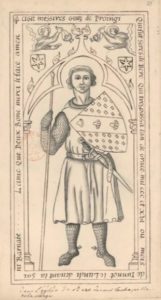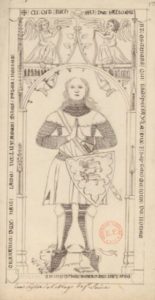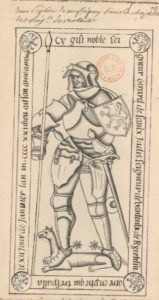CHIVALRY
Spurs
- 11th-15th centuries
- Wrought iron
- France and England
A spur is a metal element fitted to the heel on a rider’s boot. It has a spike or wheel at the back, depending on the period. The rider prodded it into the horse’s side to make it go faster. The spur was one of a knight’s attributes.
Spur from the 11th-12th century
The spur characteristic of the 12th century was fitted with a long, sharp tip that was embedded in the horse’s side.
![]()
King Saul, Bible of Worms (Germany), about 1148, British Library
Spur from the 12th-13th century
In the late 12th century, the spike at the back of the spur was shortened and given a pyramid shape.
![]()
Bayeux Tapestry, 11th century, Bayeux Museum (Normandy)
Spur from the 13th century
A sort of metal ball or sometimes a small disc was added to the spike on the spur, so that the spike was not fully embedded in the animal’s side.
![]()
Westminster Psalter, 1250, British Library
Spur from the 14th-15th century
In the 14th century, the design of spurs radically changed, with wheels (rowels) with several spokes added to injure the animal less.
3 extra icons to illustrate 3 types of spur:
These three drawings of tombstones show changes to the design of spurs down the centuries, as well as the horse-rider’s equipment. First, chain mail and a tabard, then the earliest plate armour to protect the legs and finally full plate armour.
- Prick spur: Légende: f. 25r, France, Beire, church: tomb of Gui de Proigny

- Round end spur: Légende f. 173r, France, Saint-Seine-l’Abbaye, abbey church: tomb of Richard de Jaucourt

- Rowelled spur: Légende: f. 79r, France, Messigny, church: tomb of Gérard de Saulx

Harness pendants
- 14th-15th centuries
- Gilded or enamelled bronze
A pendant is a decorative element in a horse harness. Symbolically, the pendant was designed to protect the horse, giving it strength and stamina.
Picture caption : The Trinity Apocalypse, about 1350, Library of Trinity Collège, Cambridge

